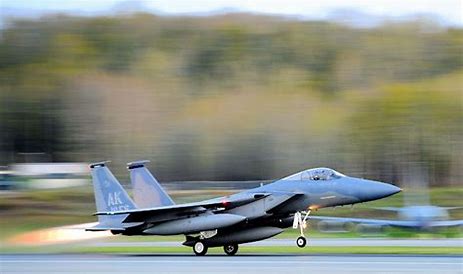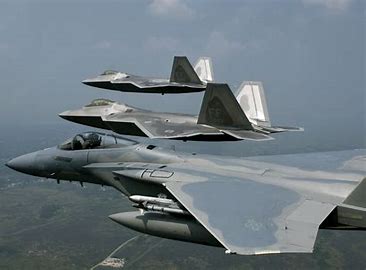
The US Air Force’s latest addition, the F-15EX Eagle II, is shaping up to be a dominant force in the skies, with recent developments signaling a new era in combat air superiority.

This fighter jet, a modernized version of the classic F-15, brings unparalleled weapon-carrying capacity, speed, and versatility to the table, aligning with Congress’s push for an increased fleet to meet future strategic challenges.

The discussion around the F-15EX Eagle II is not just about hardware but also about strategic calculus. While the Air Force initially intended to procure 144 of these jets, budgetary constraints led to a reduced target of 98.

However, Congress, anticipating high attrition scenarios in potential conflicts with near-peer adversaries like Russia, has been advocating for an additional 24 jets, bringing the total planned fleet to 122 units.

This insistence by Congress underscores the importance placed on maintaining a robust and diversified air fleet capable of engaging in various mission sets.

With its ability to carry an impressive 30,000 lbs of munitions, the F-15EX Eagle II is positioned not only as a formidable air superiority fighter but also as a versatile multirole aircraft capable of excelling in close air support and strategic strike roles.

The recent successful missile test from the F-15EX Eagle II marks a “major step” in its development, demonstrating its enhanced missile capacity. The aircraft’s ability to carry up to 12 air-to-air missiles significantly outpaces its predecessors and is an indication of the Air Force’s focus on firepower and readiness.

The F-15EX is being equipped with additional slots near its wing tips, which will allow it to hold more missiles than the F-15 Eagle and other jets in the Air Force’s inventory like the F-16, F-22, and F-35A.

What’s more, this advancement comes at a time when the F-22 Raptor’s production line has closed, the older F-15C/Ds are aging beyond their intended operational years, and the F-35 Lightning II faces production issues.

The F-15EX Eagle II, boasting an expected operational lifespan of 20,000 hours and a lower cost per flight hour compared to the F-35A, emerges as a cost-effective stopgap and a vital component of the Air Force’s strategic outlook.

As the debate continues over the allocation of military resources, with Israel potentially doubling its order of F-15EX jets thanks to U.S. aid, questions are raised about the necessity and strategic deployment of these aircraft.

With Israel’s already formidable air force and air defense systems, the need for additional F-15EX jets remains a topic of discussion.

Regardless of the outcome, the F-15EX Eagle II stands as a testament to the evolution of military aviation technology.

Its abilities in air superiority, coupled with its formidable payload and agility, ensure that the US Air Force remains equipped to face any potential future challenges in an increasingly complex global arena.

The Eagle II’s development and deployment will undoubtedly continue to captivate military tech and politics enthusiasts, as it reflects the intersection of science, nature, and defense strategy in the 21st century.
Relevant articles:
– Boeing’s F-15EX Eagle II Can Carry 30,000 Pounds of Bombs and Missiles, The National Interest
– F-15EX Eagle II Fighter: Does Israel Really Need This New ‘Bomb Truck’?, nationalinterest.org
– Boeing’s F-15EX Eagle II: What Makes This Fighter Truly a Game Changer in the Sky, The National Interest
– The new F-15EX took a ‘major step’ closer to carrying more air-to-air missiles than all other US Air Force fighters in testing, Business Insider
